Journal of Civil Engineering and Environmental Sciences
Municipal solid waste management in the City of Indore- A case study
Rasmeet Singh*
Cite this as
Singh R (2021) Municipal solid waste management in the City of Indore- A case study. J Civil Eng Environ Sci 7(1): 008-017. DOI: 10.17352/2455-488X.000039Due to the rapid increase in population, Municipal solid waste management has become an important activity in urban localities. It is one of the obligatory responsibility of Municipal Corporation and urban local bodies to minimize solid waste and process it efficiently. The high generation rate of municipal solid waste and the complexity of waste generation are major challenges of Municipal Corporation Indore is considered as the business capital of Madhya Pradesh state. The present population in Indore is more than 19 lacks. Apart from infrastructural development, equal importance should be given to Municipal solid waste. A well-planned system needs to be followed to maintain municipal solid waste. The present study aims to analyze the present situation of waste generation, collection, transportation, and disposal of the Indore city. The study also discusses various governmental policies introduced to manage waste effectively. This study will provide its readers with a fair idea of the existing scenario of Municipal waste management system of the Indore city.
Abbreviations
NGT: National Green Tribunal; ₹: Rupee; MT: Metric ton; GPS: Global Positioning System; GoI: Government of India; DHW: Domestic Hazardous Waste; GTS: Garbage Transfer Station; MRF: Material Recovery Facility; CBWTF: Common Biomedical Waste Facility; OD: Open Defecation; RDF: Refuse Derive Fuel
Introduction
It is a categorical belief that the clean environment is the fundamental right of every citizen under Article 21 and the local as well as state authorities must ensure that public health is well-maintained by all possible means. Following the same, a 2019 order by National Green Tribunal (NGT) was noted to overcome the financial inability.
Cities having population more than 100,000 produce 67,000 tons per day or 44% of total waste generated in the country, as per reported by July 18, 2019 answer in the Lok Sabha. The NGT asked the central and state government to form the guidelines to implement Solid Waste Management Rules, 2016. To speed-up the process, NGT announced that any state or union territory which does not comply with these statutory obligations shall be liable to be proceeded against as per the Environment (Protection) Act, 1986. Also, the state would be asked to pay a fine, and the senior officer of the state or local body could also be personally liable [1].
“The stark reality is that no one wants to pay for this. No one believes they are responsible for the garbage they produce even though India has always followed the principle that the polluter pays,” said Shah of Swaha, the company making mobile composting vans.
But “the success of Indore shows that this is doable” It’s a lighthouse project for MP, and for other similar cities across the country.”
In 10 years, Indore will create 2,000 metric tons of waste every day, up from the current 1,200 metric tons, as per estimations. The point is to diminish this waste and keep it at 1,500 metric tons, particularly by lessening plastic waste and usable food waste.
India’s cleanliness overview depends on the on-ground confirmation, resident input, handling of waste, innovative methodologies, financial sustainability, and recovering solid waste administration costs, isolation at source, and nature of administration and execution. In 2019, of 100 urban communities with a population of more than 100,000, Indore positioned first. The second place was Bhopal, the capital of Madhya Pradesh, trailed by Chandigarh and New Delhi.
Indore was positioned first in 2017, up from 25 in 2016, a position it has kept up for longer than a year. In spite of the fact that the venture was initially pushed by the then city official Manish Singh, the program has kept on being implemented and improved by the present magistrate, Asheesh Singh, experts and residents said, showing that the program is not dependent on a single person.
Further, isolating waste has become a propensity; occupants were astonished when this columnist interrogated them regarding trash isolation and assortment.
Moreover, the city’s model is exceptionally cost concentrated, said Sambyal of CSE. Indore has made a capital venture of rupees 180 crore into the program and spent rupees 155 crore on its activities in FY 2017-2018.
Numerous urban areas don’t get that sort of cash for strong waste administration and sanitation. However, Indore likewise has a ‘robust collection of user fees, high punishment charges, and makes revenue from the sale of fertilizer and dry waste’, which makes it a success win circumstance.
The program gathered ₹27 crore in user expenses, while the remainder of the funding was subsidized by property taxes. Household units pay between ₹60 and 150 a month dependent on the waste they produce, and business offices pay ₹3 for every kg of waste.
Indore intends to decentralize waste processing, for example, in the road food and vegetable market. This would help diminish user fees, and the end client could profit by the final result of waste handling, and help the IMC lessen transportation and preparing costs. The IMC plans to lessen costs by 10% consistently, through such activities. Decentralized waste processing is followed in different urban communities, for example, Mysuru, Karnataka, and Panaji, Goa.
Swatch bharat mission (clean India mission): The story of indore
On 2nd October 2014, the birthday of the father of the nation, Mahatma Gandhi, the ‘Swatch Bharat Mission’ (SBM) was propelled by the Government of India. The mission was divided into two sections – urban and rural. In urban regions, the emphasis was on building Open Defecation Free (ODF) towns by developing individual, network and public toilets, and solid waste management.
Indore today produces more than 1,115 MT of trash a day and every last bit of it is gathered from the source whether it is a family unit or business foundation. The door-to-door collection was begun in January 2016 as a pilot extends in two of the 84 wards in the city. It took close to 12 months to accomplish a 100% way to door-to-door trash assortment. Indore through its excellent community-oriented endeavors has accomplished segregation of waste at source at 100% of its family units and business units.
Residents of Indore assumed a critical job in making the city slick and clean. The tidiness situation of Indore was changed by improved lifestyles or its residents. Within a year, the Municipal Corporation effectively sharpened residents for segregation at spots and not dumping trash in open territories. The Swachhata story of Indore is really changed through network investment.
The collection plan
Solid waste management was carried out in following stages [1-4].
Primary collection: Household waste was gathered in certain areas by municipality laborers and in others through the private arrangements by lodging settlements.
Private waste gatherers were designated “Jagirdars”. They had poor service quality levels and frequently dumped the trash in open government land/void plots prompting risks for residents.
Generally, the waste gathered was placed in dustbins along central avenues. The city had 1380 dustbins with some of them fit as a fiddle. These dustbins would regularly flood making an ugly look around the city. Stray animals (dairy animals, pigs, and dogs) would benefit from this trash. A portion of these animals (cows and pigs) were taken care of by the Jagirdars who could get extra pay by milking the cows or selling them for meat. They had a personal stake in not keeping the localities clean so the animals could benefit from them and lessen their support cost on these animals.
Secondary collection: From the focal dustbins, waste was expelled by a private contractor authority worker A2Z Infrastructure Limited and moved to open dumping ground into Devguradia. A2Z was confronting an extreme financial emergency prompting seriously influenced secondary waste transportation framework. Their money related burdens were reflected in the poor support of vehicles oversaw by them and unpredictable assistance prompting collection and flooding of dustbins.
The combination of poor assortment and transportation of household unit waste lend a dingy look to the city. Moreover, open defecation was common in slum regions as the region had not given enough open toilets to such individuals to utilize. Indeed, even with the city zones, the tidiness of open toilets was inappropriate prompting open defecation by different residents also.
The Mayor communicated her anxiety about tidiness to the official and apprehensions about continuing with A2Z which prompted an end of the agreement in August 2015.
Door to door collection
Indore has been divided into 19 zones and 85 wards. Each ward has on a normal 6,000 family units and 600 business foundations (some portion of 88 told business territories). In Indore, waste is produced from different sources including family units, business zones, and different establishments like RWAs, hospitals, commercial areas. The families or private edifices are secured by the door to door collection framework while the semi mass and mass generators are secured by the bulk assortment framework. Indore guarantees the 100% coverage of wards through its door to door framework [1].
Implementation of D2D collection system: In order to execute an effective way for the door to door collection system, a recognized study investigation must be completed to assist with making the amount of waste produced at each ward and the number of inhabitants in each ward. On that premise, a detailed course plan was set up to cover all wards. According to the course plan, a definite vehicle and staff organization plan was executed so as to meet the collection demands of each ward.
The door to door collection system is done using partitioned vehicles. There are three separate assortment bins for wet, dry, and residential hazardous waste in every tipper. These tippers carry the waste from households to the exchange station, from where the waste is moved to the digging ground in hook loaders. All vehicles utilized in the assortment and transportation framework are observed by a GPS empowered system. The GPS system is continually observed by the monitoring cell. Any off-route deviations by specific drivers are punished and multiple deviations are also grounds for termination.
The wet waste from the houses is gathered through the Door to Door Collection System. The door to door assortment framework has been conveyed by IMC to gather the waste from household generators and business regions in Indore. The waste is gathered through partitioned vehicles known as ‘Tippers’ and shipped to the Garbage Transfer Stations for auxiliary assortment.
Wet waste from semi bulk generators producing 25 to 100 kg of waste is gathered through the Bulk Collection System. The bulk collection vehicles comprise of a dumper (Figure 1) which is utilized to gather wet waste and a compactor which is utilized to gather dry waste. These vehicles move in pairs according to a predefined arrangement plan. These vehicles on finishing their route, transport the waste directly to the centralized preparing plant.
The bulk generators producing in excess of 50 kg of waste goes under the class of bulk trash generators. According to the GoI rules, it is compulsory for these generators to have on-site processing of their wet waste. Thus the wet waste isn’t gathered from these generators.
The wet waste gathered by the door to door system vehicles is taken by the tippers to one of the eight exchange stations. At the GTS, the tippers empty the wet waste into committed compactors that pack and load of the wet waste on devoted hook loaders. The details of all the approaching waste gathering vehicles are signed in the logbooks at the GTS. The mass assortment vehicles don’t travel out to the GTS however directly to the processing plant in the wake of finishing their individual collection routes.
The Weighment Bridge office is set up at the central processing plant. This is the primary purpose of communication for all the vehicles approaching at the plant. This is a mechanized office where the weight of all the wet waste that is being gathered by the door to door collection and the bulk collection framework is done before it can move to the handling plant.
The wet waste is processed in two different ways for example Central Processing Plant and Decentralized Waste Processing Units. All the wet waste of the mass generators (50 kg or more) is prepared at their premises, so this waste isn’t handled at the central plant. The wet waste from the GTS (D2D Collection) and semi mass assortment (25 to 100 kg) is transported to the central wet waste handling plant, where it is prepared into fertilizer.
The Domestic Hazardous Waste consists of material as sanitary pads, lead acid batteries, etc. This waste is collected in a separate bin which is attached at the back of the waste collection vehicle.
Domestic hazardous waste
The Domestic Hazardous Waste consists of material as sanitary pads, lead acid batteries, etc. This waste is collected in a separate bin which is attached at the back of the waste collection vehicle. Waste composition in Indore is classified in Table 1 and Figure 2.
It is explained as:
• The dry waste, similar to wet waste, is gathered through the door to door and mass assortment frameworks. The dry waste by residents is gathered through tippers and dry waste produced by all bulk generators is gathered through the bulk collection system. The domestic hazardous waste is gathered in a different “Third Bin” which is joined at the back of the door to door tipper.
• The GTS is utilized for secondary collection of waste. The dry waste is emptied into devoted compactors, packed, stacked onto dedicated hook loaders, and transported to the central processing plant.
• The DHW is moved into drums which are then fixed and weighed on the spot. This is finished by the staff of the agency managing the Central Biomedical Waste Treatment Facility. On weighing, the staff of the office prepares the GTS staff with slips where the time of collection, date, and weight of gathered waste is recorded. The waste is then moved to the facilities in assigned vans.
• The waste is then moved to the Weighbridge Facility. This facility is situated at the central waste handling plant and is the primary stoppage of all the vehicles approaching at the plant. The electronic office records the heaviness of all the dry waste that is being gathered by the door to door collection and the bulk collection framework alongside different recordings as vehicle in-out time, enrollment number, source move station, etc.
• Indore has centralized dry waste handling and processing plants at Deveguradiya. Here, the dry waste is isolated into various segments as metal, plastic, paper, rubber, etc. This isolation is finished by the 343 rag pickers employed at the two Material Recovery Facilities at the plant.
The Domestic Hazardous Waste is sent directly from the GTS to the Central DHW Treatment Facility to be incinerated. This is overseen by an outside contracted organization. The facility is utilized for the treatment of biomedical and household dangerous waste. At this office, the waste is incinerated. In dry waste handling, Inert is recuperated at both the MRFs. The inert is then moved to the sanitary landfill at the same location. Prior to the moving, the inert is weighed at the weighbridge and signed in the system. The remaining parts of DHW, which are left after the waste is burned, are likewise sent to be landfilled. This is a different landfill system built solely for hazardous waste and is referred to as a hazardous landfill.
Step-wise procedure of waste management from generating spots to processing units
Waste generation and segregation: The waste is produced in Indore in a segregated structure. The waste generators have been named household, semi bulk and bulk generators. Local generators are the generators that produce under 25 kg of waste for every day. Generators that produce 25-100 kg of waste for each day have been arranged as semi bulk generators. The generators producing in excess of 50 kg of waste have been named bulk generators.
The waste is produced in segregated structure as wet waste, dry waste, and domestic hazardous waste by the domestic generators. The mass/bulk generators segregate the waste as wet waste and dry waste.
Waste collection an transportation: The waste is gathered in a segregated structure for domestic generators by partitioned tippers. These tippers have been partitioned in the proportion of 50:50, 60:40, or 85:15. The wet and dry waste is gathered by these vehicles in separate chambers. The domestic hazardous waste is gathered in a different container that is connected at the rear of the tipper. The tippers have predefined collection routes that have been characterized in their arrangement plan, controlled from command center as shown in Figure 3. The tippers on finishing their routes, move to their assigned GTS and offload their waste in the assigned compactor. The compactor packs the waste and it is stacked on the hook loader to be moved to the central processing plant.
The waste from the bulk generators is gathered through the bulk framework wherein two vehicles are conveyed to gather wet waste and dry waste independently. The bulk generators are additionally separated into two classes according to the amount of waste produced. The first category comprises of generators that generate 25 to 100 kg of waste. These are little bulk-mass foundations like small eateries, coffee shops, and so on. From these generators, both wet and dry waste is gathered in a segregated way by dumpers and compactors that move in pairs to gather waste along their route. In the subsequent class, the generators producing more than 100kg waste have been put. These generators are RWAs, community gardens, hotels, etc. Only dry waste is gathered from these generators as they treat the wet waste created by them on on-site.
Weighbridge: The processing plant for the weighbridge facility is an automated facility and the principal point of meeting up for all vehicles approaching the plant to offload their waste. All the approaching vehicles are squandered after entering the plant and after they have offloaded the waste to determine the waste that has been brought by them. At that point, a receipt is produced and recorded at the office. This receipt delineates the amount of waste moved, type of waste, enlistment number of the vehicle, source transfer station, and the in-out time of the vehicle.
Waste processing: The dry waste from both the exchange stations and the bulk collection vehicles is offloaded at the MRF spots, where they are additionally segregated and prepared. The wet waste from the exchange stations and the bulk collection framework is offloaded for handling at the central composting plant. The wet waste of the bulk generators is processed on site by the individual generators.
The residential hazardous waste is treated in a different facility where it is moved directly from the exchange station in biomedical vans. The hazardous waste is burned at the Central Biomedical Waste Treatment Facility [5].
Road cleaning: Consistently, 800 km of streets are cleared by machines, footpaths, and road dividers are washed by a water mist. This uses 400 liters of water each night, majority water is the reused water from the three sewage treatment plants set up by the IMC. Inside streets that make up the remainder of the 2,200 km are swept, and the waste is gathered in gunny sacks, gathered by vans and taken to the waste processing plant.
In the initial a half year of street cleaning, about 20,000 and 30,000 metric tons of residue was cleared.
Garbage Transfer Station (GTS)
Indore is one of the economically evolved urban areas of Madhya Pradesh and is the budgetary capital of the state. Indore is the ninth biggest city in India with a population of around 25 lakhs. The city is divided into 85 Wards and 19 Zones as the operational zone for Solid Waste Management (SWM). In Indore, waste is gathered in an isolated way for example the waste is isolated at source by the generators. The absolute waste generation in Indore is 1115 MTPD. Out of all waste, 58.25% is wet or natural waste, 41.75% is dry waste and 0.5% is a household hazardous and sanitary waste. The complete wet waste generation is approximately 650 MTPD and the dry waste is 465 MTPD.
All of the waste collected is shipped by the Tri-partitioned trash tippers sent in all 85 wards to the assigned GTS. Before this, the waste was being moved to the centralized plant which is roughly 20-23 km from the city. To strengthen and diminish the expense of the Secondary Collection and Transportation System, IMC has built eight ultra-modern transfer stations with three basic models, for example, Ramp based static GTS, portable Compactors based GTS and semi-portable Compactors based GTS installed by Hyva and TPS at different locations mentioned below within the city:-
• Star Square
• Kabitkhedi
• F-sector, Sanwer Road
• Sangam Nagar
• Sirpur, Dhar Road
• Lalbagh
• Crystal IT Park
• Rajshahi, DakkanwalaKua
The entirety of the above models have arrangement of segregated waste assortment and transportation through Hook loaders to the removal site. There are two containers:
• Blue shading: for dry waste collection and
• Green shading: for the collection of wet waste
The MSW from door to door trash tippers is gathered in two stages.
• Stage one: the dry waste is offloaded in the blue hopper
• Stage two: the wet waste is offloaded into the green hopper
These containers are associated with blue and green holders separately (Figure 4). The separated MSW is packed into respective containers. At the point when the containers are completely filled, they are lifted by hook loader and sent to the removal site in a segregated way. The Hook loader which carries wet waste loads their waste straightforwardly to the Centralized Composting Unit while dry-stacked is led to the Material Recovery Facility 1/Material Recovery Facility 2 at the removal site.
The container for sanitary waste and household hazardous waste is off stacked into devoted drums and is shipped to Common Biomedical Waste Facility (CBWTF) according to the standards secured under Biomedical Waste Rules 2016.
The city of open defecation
Open defecation refers to the practice whereby people go out in fields, bushes, forests, open bodies of water, or other open spaces rather than using the toilet to defecate.
Open defecation is because of the lack of toilets and awareness of individuals. Besides this, awareness of toilets was significant in the mission ODF. In October 2016, NGOs were signed by the IMC with strict rules of turnover and urban planning experience. The fundamental responsibility of NGOs was to identify key ODF spots in and around the city.
The cleaning staff distinguished 72 basic ODF spots in the city. NGOs played an extremely important role in recognizing ODF spots and illuminating them to the specialists. The significant accomplishment for ODF got through these NGOs who worked admirably in recognizing basic ODF spots and bringing out social change among the general public.
72 OD spots have been distinguished after the overview led in November 2016. So, in order to dispose of these 72 OD spots, a complete plan was formed by the Indore Municipal Corporation.
Few attempted activities to make Indore ODF were:
• Devising strategy and action plan for identified 72 critical OD spots.
• Shifting of 5000 slum households to non-occupied Basic Services for Urban Poor (BSUP) flats within a year.
• Strict action and monitoring by officials of the IMC against defaulters and spot fine issued to over 500 defaulters.
• Dedicated ODF triggering and monitoring activities by 6 NGOs and 400 officials of the IMC.
• 12343 IHHL have been identified to be constructed out of which 12343 in total have been constructed.
• 189 Public toilets have been identified to be constructed and till date, 189 have been constructed.
Modular toilets have been built in places where slums have been created on private land, transit, and disputed settlements. This helped in handling the sanitation challenges led by individuals living on illegally occupied grounds, construction laborers, nomadic communities, truck parking areas, etc. for whom permanent toilets are not feasible. Once these slums are migrated, the new toilets can be dismantled and utilized where required. IMC ordered that all building destinations will give sanitation facilities to its laborers through a notification.
• 17 mobile toilets (Figure 5) are created by IMC for use at open region capacities and occasions, for example, marriages, political social occasions, marathons, etc. This type of toilet is accessible for the resident of Indore on a payment basis. These charges are affirmed by Mayor in Council. For these versatile toilets, appropriate cleanliness with water is guaranteed.
Classification of waste (Table 2)
Converting waste to fuel
For the decentralized handling of waste from the vegetable, fruit and flower market, a bio-methanation facility converts organic waste to methane.
Around 20 tons of waste is gathered each day and changed over into 750-800 kg of bio compressed natural gas (bio-CNG), said Mahindra Waste to Energy Solutions Ltd. The organization has an agreement with the IMC to work the plant for a long time.
The gas created is utilized to run city transports, and sold as a cooking fuel to hotels and the Indian Institute of Management, at a financed rate. Squander from the flower industry is kept independently (1-2 tons every day), and blended in with slurry to produce compost. One of the plant is shown in Figure 6.
Techniques used by indore in MSW
Gasification: It is the process where organic material with carbonaceous compounds become carbon monoxide (CO) when heated above the temperature of 700 oC. The product of this process is a syngas which is an alternative renewable source of energy. The by-product also includes solid waste (ash). The various gasifiers available are bed fluidizes bed, fixed bed in parallel, fixed bed in countercurrent, plasma, entrained flow and free radicals.
Incineration: This involves burning of organic matter present in MSW with combustion and ashes as a by-products. It is beneficial for pathogens, toxins and other hazardous wastes. The process is carried out in an incinerator. the installation and maintenance costs are higher, also the waste mainly consists of high inert content (30-50%), high organic matter (40-60%), high moisture content, low heat content (~1000 kcal/kg), and thus proves to be a bad option of waste management.
Composting: This includes breaking down of an organic material and process materials into fertilizers and soil amendments. Compost is rich in nutrients and is used in soil rehabilitations.
Landfill: One among the oldest method, this is done on a dump where waste is poured uniformly and is covered with layer of soil.
Recycling: This process converts wastes into new products. The materials generally includes glass, paper, electronics, textiles, plastic, metal, etc. It is considered as the key element of modern waste reduction.
Landfills
The main objective of landfills (Figure 7) is to dispose of solid waste in order that it has minimum impact on the environment as well as the minimum cost of operation. The site has to be well managed to place the maximum amount of waste. The four stages of operation include:
Site selection: Factors like geology, topography, land use, transport routes linking the site, distance from the center of waste generation, etc. need to be considered before using the site for sanitary landfills.
Preparing the site: Water pollution and operational efficiency are the main factors in preparing the sanitary landfill sites. Polluted water is prevented from reaching the earth’s water by introducing a semi-permeable membrane. This membrane is either a layer of natural clay or artificial sheet if imported clay, soil mixed bentonite, etc. The polluted liquid is trapped and treated so that only clean water is discharged to the environment. Other factors like runoff and construction govern the factors of efficiency.
Operations: Continuous compaction is followed to best use void space in the site. Compaction and daily covering of waste prevents foul smells, controls insects and rats. Gas emitted from the decomposing waste is collected and is either burnt on-site or used as fuel.
Post-closure management: After the site is closed to further incoming waste, it must be restored to a natural appearance. However, regular monitoring is required of gas emission and leachate.
Upgradation of trenching ground:
I. Two engineered landfill of 6.25 acre each has been constructed and are used as and when required.
II. Bioremediation of 200,000 MT waste dump on 5 acre land has been achieved.
III. Two weigh bridges have been constructed.
IV. Service station has been established where 6 vehicles can be serviced at a time.
V. Plastic collection waste center has been established.
VI. Fire hydrant system has been established for fire-fighting.
VII. For small repairing in vehicles work shop has been established.
VIII. Cement concrete road with drains and electrification with lighting has been done for better working of waste vehicles.
IX. Green belt has been developed inside and outside the disposal site.
X. Boundary wall has been constructed around the waste disposal site [5].
Recycling
This stage of municipal treatment includes three components, i.e. Reduce, Reuse and recycle. Reduction is mainly introduces by policy interventions. For an instance, prohibition of plastic bags by government. Reuse on the other hand is very common practice all around and it’s easy to understand the word. However, recycling involves municipal solid waste fractions in the form of:-
Paper and cardboard: These are produced from pulp, which is derived from plant fibers and wood. They have short life span and thus includes in major quantities of the waste. Different types of waste papers are: high-grade paper, post-consumer paper, and corrugated board.
The paper is first sorted according to their color. The next step involves the grinding, this is done mechanically or sometimes chemically. Mechanical re-pulping yields paper of lower quality as compared to chemical re-pulping. After agitation, the paper is then mixed with water to produce slurry. This slurry is thickened and then pressed. It is then dried and is ready to cut out the sheets. However, whitening or bleaching is optional to perform. Recycling doesn’t provide 100% strength to the paper probably due to loss of strength.
Glass: In waste system, glass is generally the end product from beverage and food containers. Three types of glasses are:
• Soda-lime glass: drinking glasses, bottles, jars, etc.
• Crystal glass: art, high quality drinking glasses, vases.
• Borosilicate/Pyrex glass: laboratory glass.
Glass is broken down to form cullet and is melted for the production of new bottles. Cullet is has a property of melting at lower temperature.
Plastic: Plastics constitute a major fraction of waste. It is usually produced from the distillation of fossil oil. The granulated or powder is produced from the polymers. The mixing of different plastics during recycling results in reducing cardinal features. The plastic recovery can be divided into 2 different ways:
➣ Energy recovery: heat and electricity.
➣ Material recovery: chemical and mechanical recycling.
Chemical recycling involves the breaking up of plastics into monomers which are further used in refineries to produce new products. Mechanical treatment involves the sorting of plastic, washing it to remove foreign agents, dried, and cut into chips. These chips are then extruded and the end product is black plastic.
Metal: Fe and Al are the main metals in solid waste. They are produces from mineral ore and are used in foils, cans and containers. They follow similar procedure of recycling as that of glass which includes smelting in a furnace and then generating new products from it.
Conversion of waste into useful products
Compost/fertilizers: Compost is produced by the action of microorganisms and oxygen on the raw organic material. The raw organic may be of wide variety, such as food waste, manure, agriculture waste, yard waste, etc. the raw material is processed through sorting to make a pile of small particles. The pile is either made naturally through the attack of earthworms, soil insects, and nematodes or through controlled operations like grinding, shredding and chopping. Once the pile is generated, the soil bacteria, protozoa, fungi, and actinomycetes act to process the decomposition step. Decomposition of pile follows following two phases: Active phase and curing phase.
In active phase, temperature increases rapidly due to the metabolism of microorganisms. In 24 and 72 hours, temperature can rise up to 55 to 70 °C. This temperature increases hygiene of the material by killing pathogens, it also contributes to eliminate weed seeds, and it breaks down phytotoxic compounds.
In curing phase, the decomposition of organic materials continues into stable humid substances. There is no clearly defined time for curing, it can take as long as one month to one year, depending on feedstocks, composting method used and management.
Refuse-derived fuel: The foremost step in the RDF production is sorting non-combustible wastes like glass and metal from combustibles. The pieces must be small. Next comes the assembling of unsegregated waste including cloth, plastic, organic waste, etc. To provide necessary calorific value required for burning. Further, series of steps are followed as mentioned below:
• Manual Separation
• Air separation: low density material are blown upwards.
• Size reduction
• Trommel screening: also known as rotary screening.
• Drying: it is carried to reduce the moisture content of MSW.
• Metal Separation:
➣ Ferrous metal separation using magnetic separation
➣ Non-Ferrous separation using Eddy current separation
• Producing final product: the residual waste is finally mixed with binders like agricultural husk and passed through a pelletizing machine that converts the waste into pallets.
Plastics: Plastics comprise a significant division of waste. It is generally created from the refining of fossil oil. The granulated or powder is delivered from the polymers. The blending of various plastics during reusing brings about decreasing cardinal highlights. The plastic recuperation can be partitioned into two unique ways:
• Energy recuperation: Warmth and power.
• Material recuperation: Chemical and mechanical recycling.
Compound reusing includes the separating of plastics into monomers which are additionally utilized in treatment facilities to deliver new items. Mechanical treatment includes the arranging of plastic, washing it to expel outside specialists, dried, and cut into chips. These chips are then expelled and the finished result is dark plastic.
Bio-methanation plant for wholesale vegetable and fruit market
Choitram Mandi is the biggest mandi in Central India. Around 20-25 MTPD fruit and vegetable waste is produced on a regular schedule. Prior, the waste was gathered and transferred to the centralized waste processing and disposal site of IMC, which brought about overwhelming transportation and labor cost. Hence, IMC under its arrangement of advancing the decentralized treatment of natural waste sets up a Bio-methanation plant (Bio-CNG Plant) of 20 MTPD capacity. Through the offering process, IMC designated Mahindra and Mahindra Ltd. Mumbai to build up the plant, which was appointed in December 2017. The general undertaking cost was ₹15.00 Cr out of which ₹7.2 Cr. VGF was given by IMC. The concession time of the venture is 15 years.
Presently, all the fruit and vegetable waste generated at Choithram Mandi (Figure 8) is being gathered and prepared in the Bio CNG plant. Around 800 kg of purified and compressed Bio CNG having 95% pure Methane gas is generated on daily basis. The pressurized Bio-CNG gas is utilized as a fuel to work roughly 15 city support buses. The processed slurry is gone through strong liquid separation unit, filtered fluid is utilized in the making slurry and the rest is dried and changed into organic fertilizer.
Gap assessment (Table 3)
To overcome all the deficiencies of present system and to establish soild waste management system of Indore city as per and Solid Waste Management Rules 2016 following actions are required:
• 100% door to door collection and storage of waste.
• To make city bin free so as no storage of waste can be done along roads.
• Fixing of litter bins in all commercial areas.
• Establishment of modern transfer stations at strategic locations.
• Establishment of waste to energy plant.
Conclusion
This paper presents the municipal solid waste collection, disposal, and management plan of the city of Indore in India. The plan is developed by closely monitoring the parameters like population density, road connectivity, waste generation and disposal capacity, and waste transportation from collection sites to disposal sites. The transfer stations can be improved in strength for more efficient management. The model also represents minimum cost to distance ratio for transportation of wastes to the landfill. The Indore Municipal Corporation uses this model to support efficient solid waste management and the work schedule of workers.
I would like to thank ICSSR (Indian Council for Social Sciences Research) for funding this research work, which has helped me to carry with my work in an effective way.
-
1. Indore Municipal Corporation.
2. Public Health Department, Indore Municipal Corporation.
3. Municipal Solid Waste (Management and Handling) Rule 2000. Government of India, New Delhi.
4. India Infrastructure Report 2018.
5. Indore City Development Plan and City- Level Agenda.
Article Alerts
Subscribe to our articles alerts and stay tuned.
 This work is licensed under a Creative Commons Attribution 4.0 International License.
This work is licensed under a Creative Commons Attribution 4.0 International License.
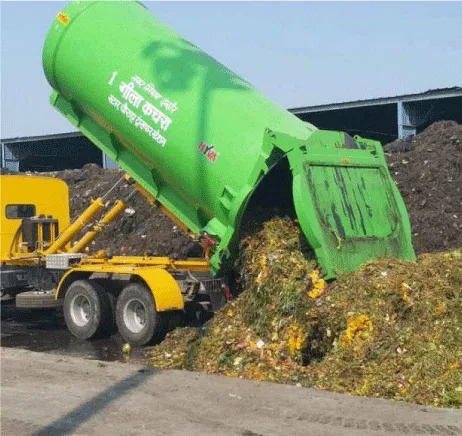
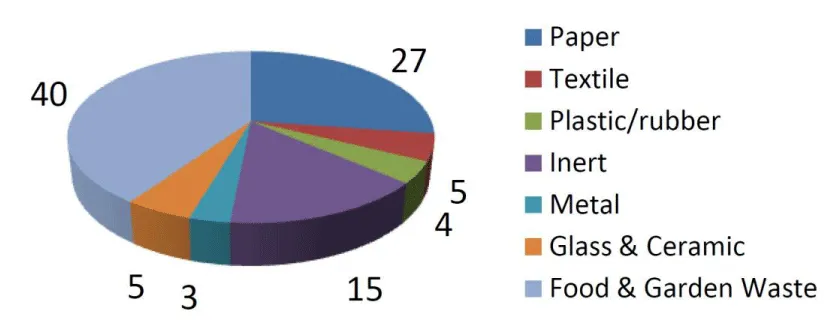
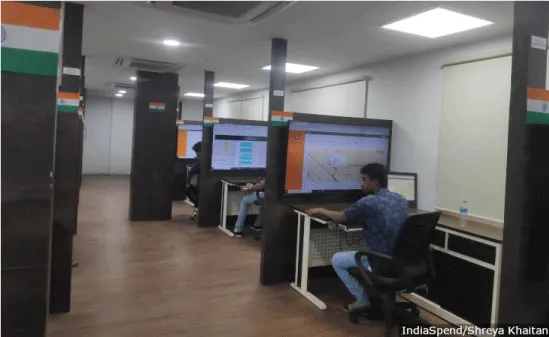

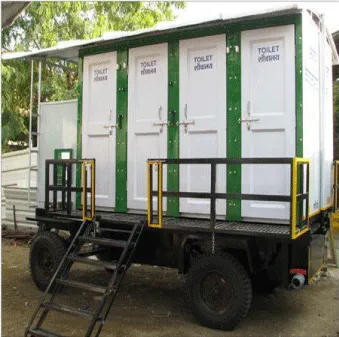
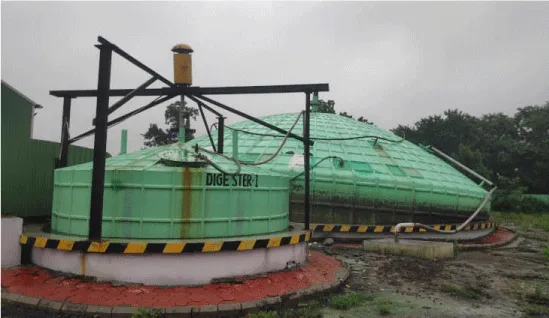
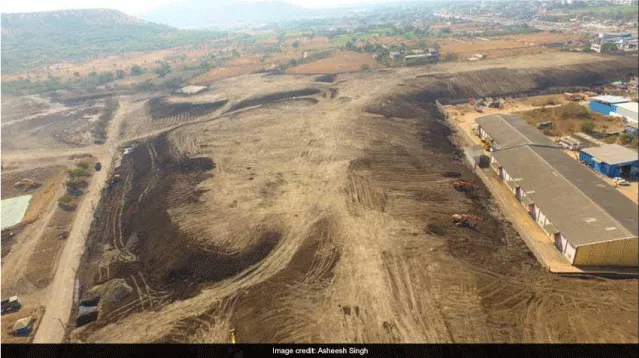
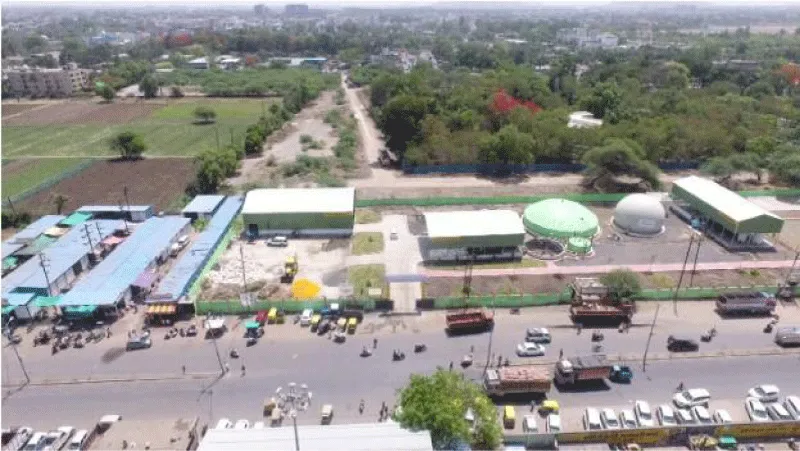

 Save to Mendeley
Save to Mendeley
